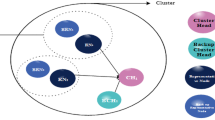Abstract
This paper puts forth a novel mobile fault detection algorithm for wireless sensor networks (WSNs) based on bacterial-inspired optimization. We introduce a bio-swarm intelligence approach to mobile fault detection in WSNs by using voltage values. At certain times, the sensor nodes in the clustered network send data packets containing health-fitness information to cluster heads (CHs) selected by the proposed CH selection algorithm. A mobile sink (MS) collects the health status via data from all the nodes as they reach the intersection point of the CHs. After this stage, the data packets are analyzed by the MS, and hardware or software faults are detected by assessing the fitness values of the nodes. The faulty nodes are eventually discarded from the network, and recovery of the rest of the nodes in the network is satisfied. Inspired by the interaction of bacteria for feed collection, their response to chemicals, and their interaction and communication with one another, we bring an innovative approach to finding node failures or software faults in WSNs, and these failures are removed from the network to help its operation and to take measures to maintain the electrical structures. In fact, we adapt our algorithm to low energy harvesting electrical components as an example. We compare our novel algorithm with existing studies through extensive simulations in NS 2 environment based on fault detection accuracy, false alarm rate, and false positive rate criteria versus fault probability, number of nodes, and sink speed. Considering detection accuracy, the simulation results validate that our algorithm shows better performance as compared with others.









Similar content being viewed by others
References
Nicolae M, Popescu D, Dobrescu R and Costea I M 2016 Scheduling mechanism for energy-efficient communication in hybrid wireless sensor networks. J. Control Eng. Appl. Inform. 18: 95–102
Vançin S and Erdem E 2017 Implementation of the vehicle recognition systems using wireless magnetic sensors. Sadhana Springer Indian Acad. Sci. 42: 841–851
Saleem M, DiCaro G A and Farooq M 2011 Swarm intelligence based routing protocol for wireless sensor networks: survey and future directions. Inform. Sci. 181: 4597–4624
Vançin S and Erdem E 2018 Threshold balanced sampled DEEC Model for heterogeneous wireless sensor network. Wirel. Commun. Mobile Comput. 2018: 1–12
Bengherbia B, Zmirli M O, Toubal A and Guessoum A 2017 FPGA-based wireless sensor nodes for vibration monitoring system and fault diagnosis. Measurement 101: 81–92
Vançin S 2016 Trafik izleme sistemlerinin kablosuz manyetik sensörler kullanılarak gerçekleştirilmesi, Master Thesis, Firat University, Elazığ
Mahapatro A and Khilar P M 2013 Fault diagnosis in wireless sensor networks: a survey. IEEE Commun. Surv .Tutor. 15: 2000–2026
Zhang D, Liu M, Zhang S, Fan Z and Zhang Q 2018 Mutual-information based weighted fusion for target tracking in underwater wireless sensor networks. Front. Inf. Technol. Electron. Eng. 19: 544–556
Panda M and Khilar P M 2012 Energy efficient soft fault detection algorithm in wireless sensor networks. In: 2nd IEEE International Conference on Parallel, Distributed and Grid Computing, Solan, pp. 801–805
Swain R R, Khilar P M and Bhoi S K 2018 Heterogeneous fault diagnosis for wireless sensor networks. Ad Hoc Netw. 69: 15–37
Zidi S, Moulahi T and Alaya B 2018 Fault detection in wireless sensor networks through SVM classifier. IEEE Sens. 18: 340–347
Ding M, Chen D, Xing K and Cheng X 2005 Localized fault- tolerant event boundary detection in sensor networks. In: Proceedings of Annual Joint Conference on IEEE Computer and Communications Societies. Miami, pp. 902–913
Nitesh K and Jana P K 2016 Distributed fault detection and recovery algorithms in two-tier wireless sensor networks. Int. J. Commun. Netw. Distrib. Syst. 16:281–296
Boudries A, Aliouat M and Siarry P 2014 Detection and replacement of a failing node in the wireless sensors networks. Comput. Electron. Eng. 40: 421–432
Chanak P, Banerjee I and Sherratt R S 2016 Mobile sink based fault diagnosis scheme for wireless sensor networks. J. Syst. Softw. 119: 45–57
Cornejo A, Viqar S and Welch J L 2014 Reliable neighbor discovery for mobile ad hoc networks. Ad Hoc Netw. 12:259–277
Elsayed W M, Sabbeh S F and Riad A M 2018 A distributed fault tolerance mechanism for self-maintenance of clusters in wireless sensor networks. Arab. J. Sci. Eng. 43: 6891–6907
Mahapatro A and Khilar P M 2013 Online distributed fault diagnosis in wireless sensor networks. Wirel. Pers. Commun. 71: 1931–1960
Yalcin S and Erdem E 2019 Bacteria interactive cost and balanced-compromised approach to clustering and transmission boundary-range cognitive routing in mobile heterogeneous wireless sensor networks. Sensors 19: 1–30
Funck J and Gühmann C 2014 Comparison of approaches to time-synchronous sampling in wireless sensor networks. Measurement 56: 203–214
Dasgupta S, Das S, Abraham A and Biswas A 2009 Adaptive computational chemotaxis in bacterial foraging optimization: an analysis. IEEE Trans. Evolut. Comput. 13: 919–941
Niu B, Wang J and Wang H 2015 Bacterial-inspired algorithms for solving constrained optimization problems. J. Neurocomput. 148: 54–62
Hamidouche R, Aliouat Z, Gueroui A M, Ari A A A and Louail L 2018 Classical and bio-inspired mobility in sensor networks for IoT applications. J. Netw. Comput. Appl. 121: 70–88
IBRL data, http://db.csail.mit.edu/labdata/labdata.html. [18ZMPT101B. [(accessed on 13 November2018)]; Availableonline:http://www.interplusindustry.fr/index.php? option=com_content&view=article&id=52&Itemid=173&lang=en
Author information
Authors and Affiliations
Corresponding author
Rights and permissions
About this article
Cite this article
Yalçin, S., Erdem, E. A mobile fault detection algorithm in heterogeneous wireless sensor networks: a bio-inspired approach. Sādhanā 45, 4 (2020). https://doi.org/10.1007/s12046-019-1241-7
Received:
Revised:
Accepted:
Published:
DOI: https://doi.org/10.1007/s12046-019-1241-7




